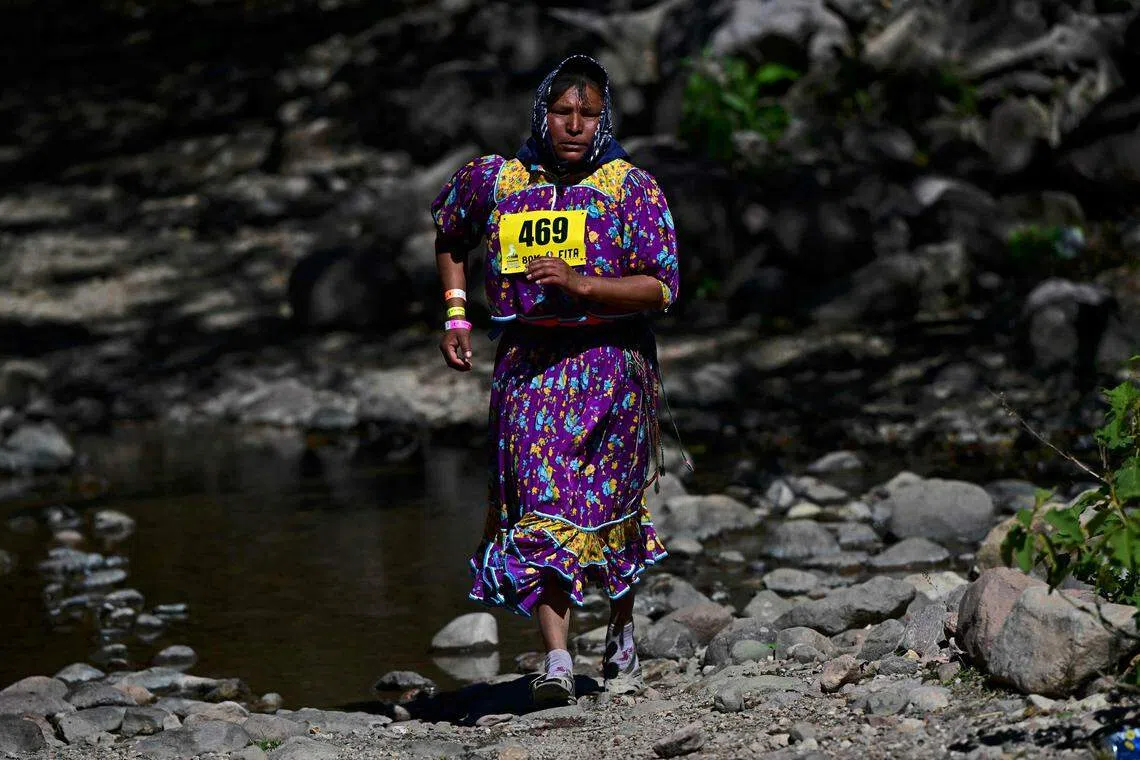Mexico ultramarathon pits outsiders against indigenous runners
HUNDREDS of athletes on Sunday (Mar 5) completed an ultramarathon through a sun-bleached canyon in north-western Mexico, with legendary Indigenous runners racing against competitors from outside the community.
The 20th Caballo Blanco Ultramarathon, one of the world’s most challenging distance events, started at dawn in the village of Urique in Chihuahua state, with races over distances of 80, 40 and 21 km through the rugged canyons of the Sierra Tarahumara.
The event has a festive ambience, but it gives runners from elsewhere in Mexico and from other countries – mainly the United States – a chance to compete against the world-famous distance runners of the Indigenous Raramuri or Tarahumara people.
Living along the edges of Mexico’s deepest canyon – it reaches down 1,800 m – they have developed extraordinary cardiovascular systems, making them “the modern Spartans”, as one cardiologist described them.
The Raramuris (meaning “lightfooted ones” in their language) often run in simple sandals, known as huaraches, made of discarded car tyres. The women run in brightly coloured dresses, while the men wear loose-fitting white shorts.

Their endurance is legendary, and they often seem to fly effortlessly past runners wearing far more sophisticated shoes.
“I’m used to these huaraches,” said one Raramuri participant, Irma Chavez. She said her feet aren’t accustomed to more expensive shoes.
Another Raramuri runner, Maria Lorena Ramirez, who was profiled in a 2019 Netflix documentary, traded in her sandals for Nike sneakers. She finished in ninth place after experiencing severe knee pain.
Brothers Jupiter and Juan Carlos Carera, from the Mexico City area, won the 80 km race, finishing in 6 hours, 12 minutes and 53 seconds.
The ultramarathon has a social function, as intended by its Mexican and American sponsors. Participants from neighbouring villages head home afterward with food vouchers – much appreciated at a time when severe drought has hurt harvests.
The Caballo Blanco race owes its name to its founder, Micah True, an American ultrarunner who lived for years in the area in an adobe hut.
Locals nicknamed him “El Caballo Blanco”, or the White Horse, after seeing the pale-looking man running hour after hour on steep canyon trails.
True founded the race in 2003 to help the Tarahumara people preserve their culture.
The 2009 book, Born to Run by Christopher McDougall tells the story of the Tarahumara runners and True’s time with them.
True died in 2012, aged 58, during a run in New Mexico. AFP
Decoding Asia newsletter: your guide to navigating Asia in a new global order. Sign up here to get Decoding Asia newsletter. Delivered to your inbox. Free.
Share with us your feedback on BT's products and services



